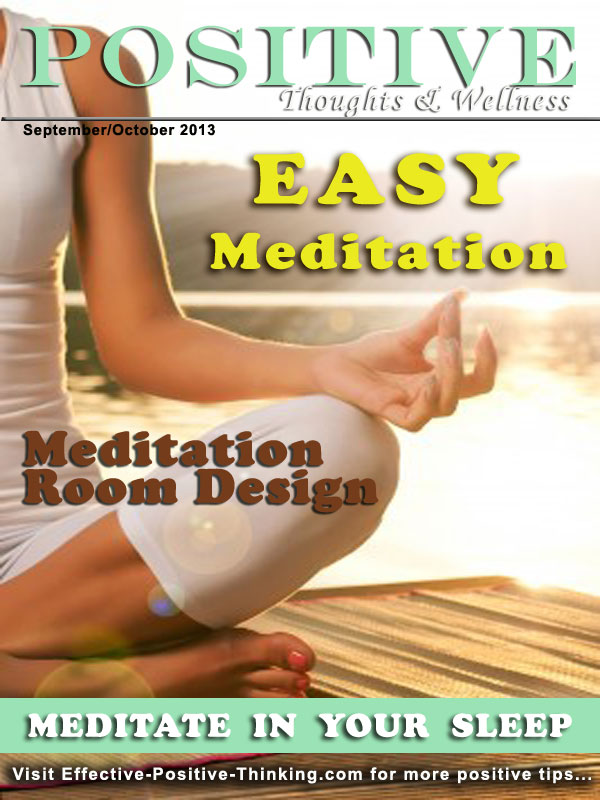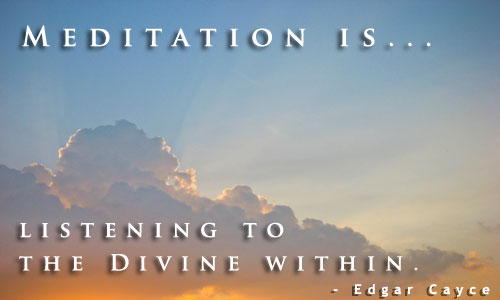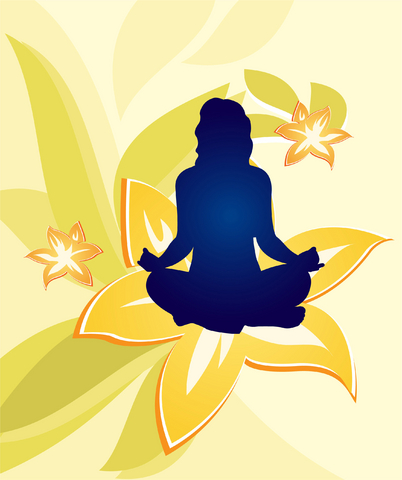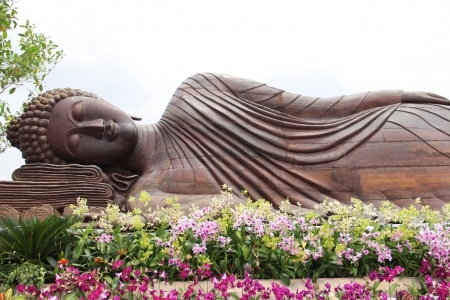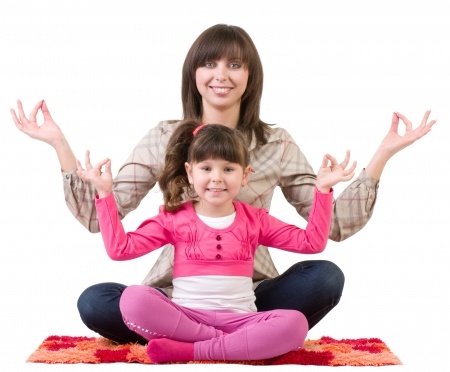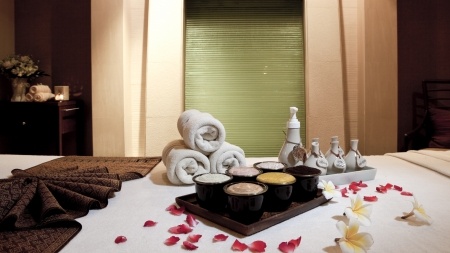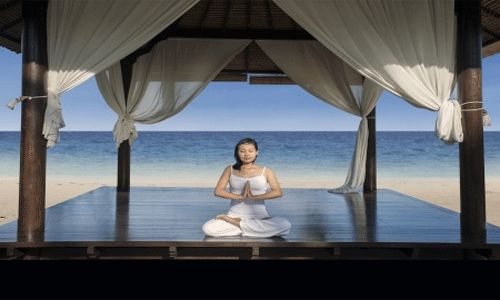Designing a Meditation Room: Good Meditation Room Design
______________________________________________________________________________________________________
By Suzanne Glover
Designing a meditation room is easy with these practical tips. Let’s take a look at the furniture to place in the room… [If you’ve just joined us, please CLICK HERE to read the first part of this article, “Meditation Room Design: Components of a Good Meditation Sanctuary”.]
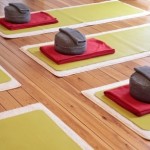 4. MEDITATION ROOM FURNITURE: Many people like to sit cross-legged when meditating. Your meditation sanctuary, however, can be furnished in whatever manner you desire. There are no strict rules for this simply because meditation is such a personal endeavor. Having a small meditation table where you can have incense or flowers is nice, as well as having a mat for meditation poses if you incorporate yoga with your meditation. But the main focus of designing a meditation room with regard to furniture is to make yourself comfortable so you will want to continue your practice of meditation. I have a couple of choices for my meditation area, which includes a favorite chair where I like to cuddle up and meditate as well as a flat area with a mat for meditation poses. Give yourself some variety, but not too much because you are training your body to respond to the same stimuli every time you use your meditation space to meditate.
4. MEDITATION ROOM FURNITURE: Many people like to sit cross-legged when meditating. Your meditation sanctuary, however, can be furnished in whatever manner you desire. There are no strict rules for this simply because meditation is such a personal endeavor. Having a small meditation table where you can have incense or flowers is nice, as well as having a mat for meditation poses if you incorporate yoga with your meditation. But the main focus of designing a meditation room with regard to furniture is to make yourself comfortable so you will want to continue your practice of meditation. I have a couple of choices for my meditation area, which includes a favorite chair where I like to cuddle up and meditate as well as a flat area with a mat for meditation poses. Give yourself some variety, but not too much because you are training your body to respond to the same stimuli every time you use your meditation space to meditate.
5. CAPTURING CREATIVITY: For some people, meditation is a place of “no thought,” while for others, meditation encourages increased creativity. So, when designing a meditation room or space, you may want to keep a note pad and pencil close by so you have the ability to capture ideas that “pop” up out of nowhere.
6. COLORS AND LIGHTING: Generally, light carries energy well, so the use of good natural lighting and walls painted with light colors encourage a freer flow of energy. However, if your schedule for meditation includes the evening darkness, then using light in the way of candles and indirect lights which cast light UP are good choices.

7. FENG SHUI: Many people associate designing a meditation room with the need to incorporate feng shui and this is a good idea if you’re relatively familiar with feng shui enough to use it well. One nice feng shui element to use in your meditation room design is water because of its soothing effect. It’s not a good idea to place the water element in the “fame” portion of your area, however. BAGUA jpeg courtesy of kenlauher.com.
8. MUSIC: Having a stereo in your meditation area may seem like a contradiction when you are trying to empty your mind, but there are two very good reasons for this: First, there is some great meditation music available that can encourage meditation, and, secondly, if you’ve read my article “Brainwave Software” that suggests using a brainwave meditation to get you going, having a stereo available with headphones can get your meditation session started, which can be followed by traditional meditation practices.
Whether you are designing a meditation room or a small meditation space, the main thing to keep in mind is to keep it simple and all yours.
Now, let’s take a look next at why going to yoga meditation health retreats is a great way to encourage meditation…


